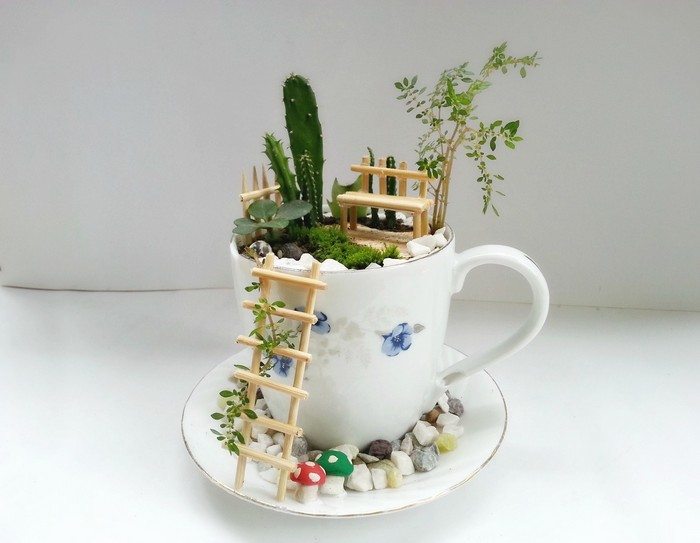Last Updated on May 24, 2024 by Team Ideas24
The internet is abuzz with miniature versions of practically everything, from hobbit houses to tiny kitchens, and what-not. Well, here’s a cute little indoor garden idea you can add to them, as well as any room in your house, fairy garden teacups!

Teacups can be dainty and cute but they can get easily chipped. This crafty fairy garden teacups project is perfect for making use of those chipped or damaged teacups and saucers. Because of their size and design, they make cute planters for mini garden decor.

It’s a very easy and fun project that you might just get addicted to making it. But why not? Fairy garden teacups are a great DIY gift idea for our loved ones, too!
Now aside from being easy to make, this miniature garden is just as easy to maintain. It doesn’t need to be watered frequently – twice or thrice a month would be enough. Just make sure to use a dropper ;)
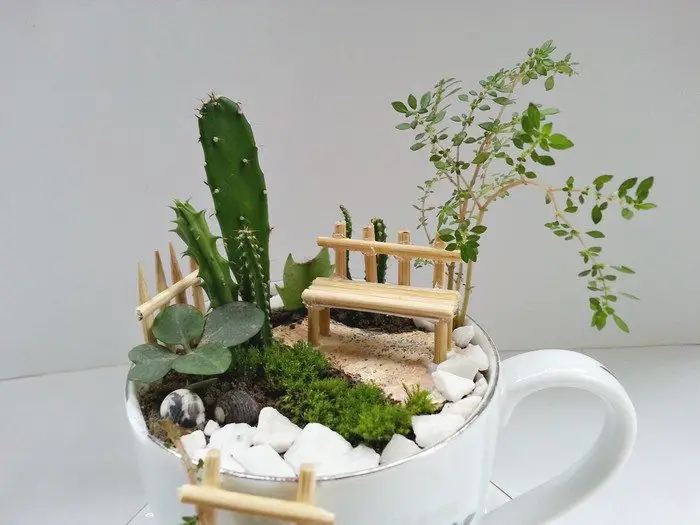
What’s not to love about this cute DIY fairy garden teacups indoor decor?
Do you know anyone who would also love this fairy garden idea?
Click on any image to start the lightbox display. Use your Esc key to close the lightbox.![]()

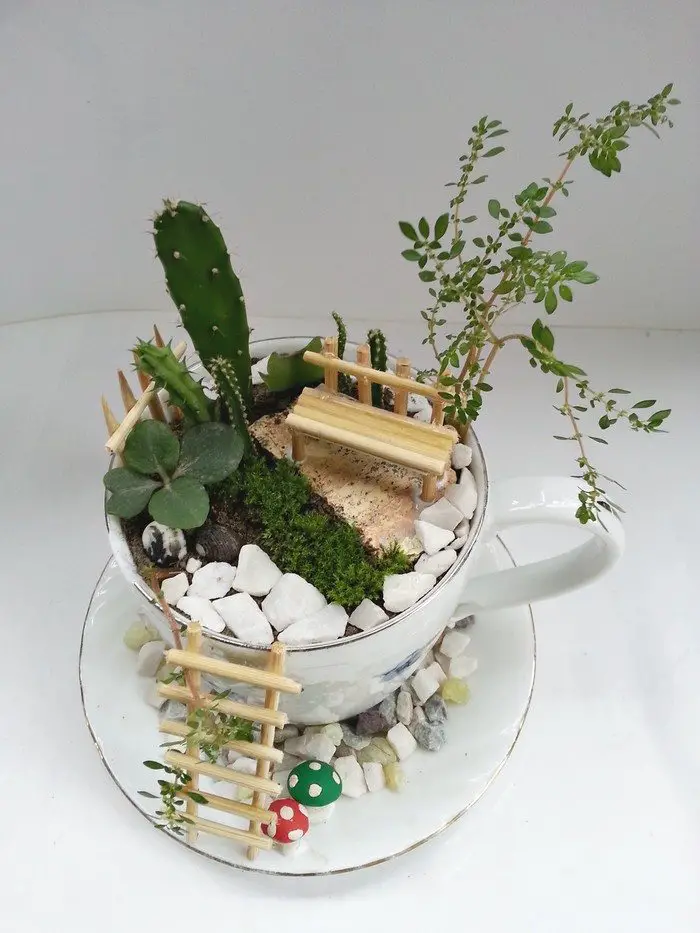
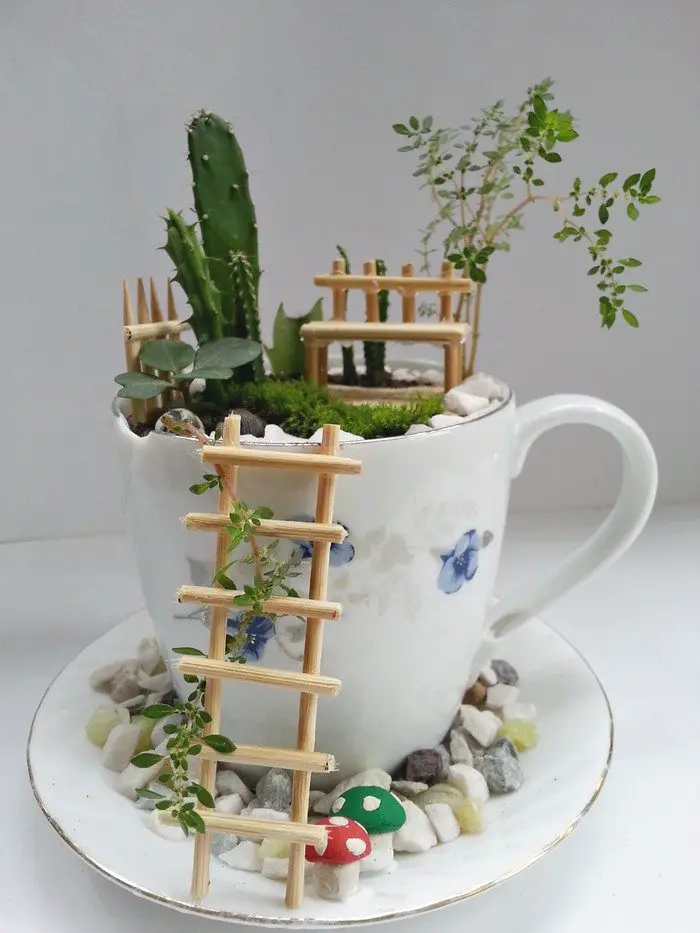

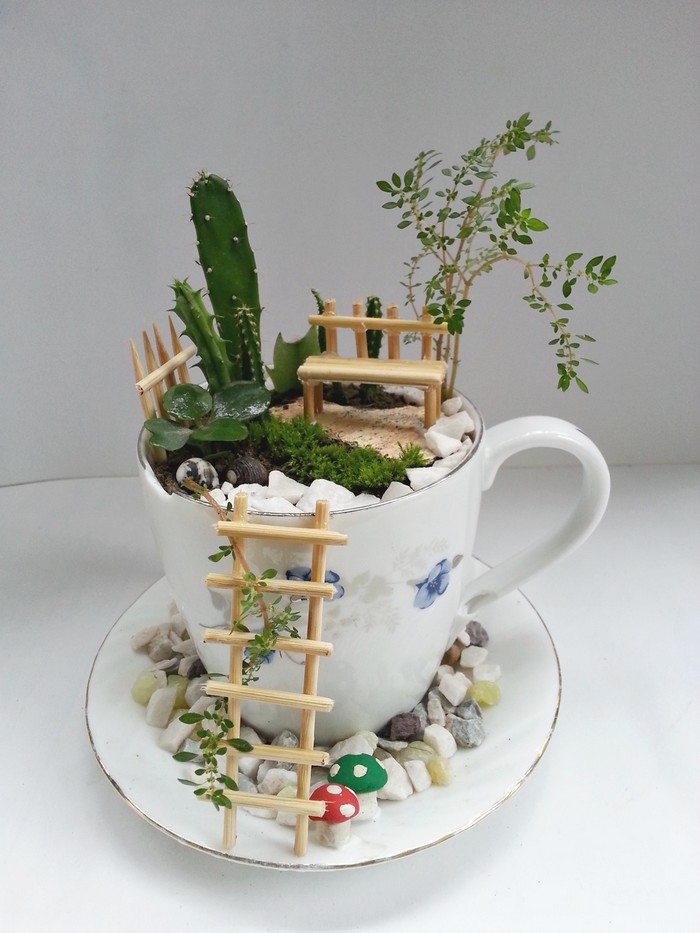

These enchanting little fairy garden teacups are easy to make and can be enjoyed by people of all ages. Here are a few tips to get you started.
Contents [show]
Making Fairy Garden Teacups
To make a fairy garden with teacups, you will need a few supplies and a bit of imagination!
Materials
- Old Cup and Saucer
- Small Rocks and Mosaic Stones
- Mixed Soil
- Cactus and Succulents
- Wall Moss and Plants
- Wooden Crafts Sticks / Twigs
- Craft Glue
Tools
- Hot Glue Gun
- X-acto Knife
- Cutting Pliers
- Ruler and Pencil
- Drill (with a diamond bit for drilling holes at the bottom of the cup)
Instructions
Now that you have all of your materials, let’s get started!
1. Prepare the teacup
You can use any kind of pot you want but let’s try something different. I’m using an old cup and saucer for my mini garden. You may want to drill a hole at the bottom of the cup for drainage or use another technique, check out the next step to find out how.
The size of the cup would depend on the number and size of the plants and accessories you’ll be using. The one I used wasn’t too big nor too small, and it worked out perfect!
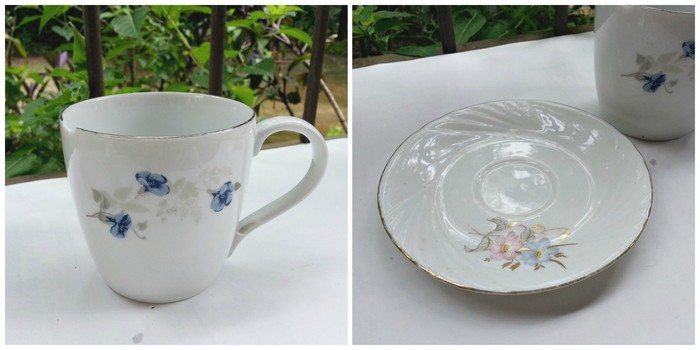
2. Fill the bottom of the fairy garden teacups with rocks
Gather some small rocks and mixed soil for your fairy garden teacups, do not use sand.
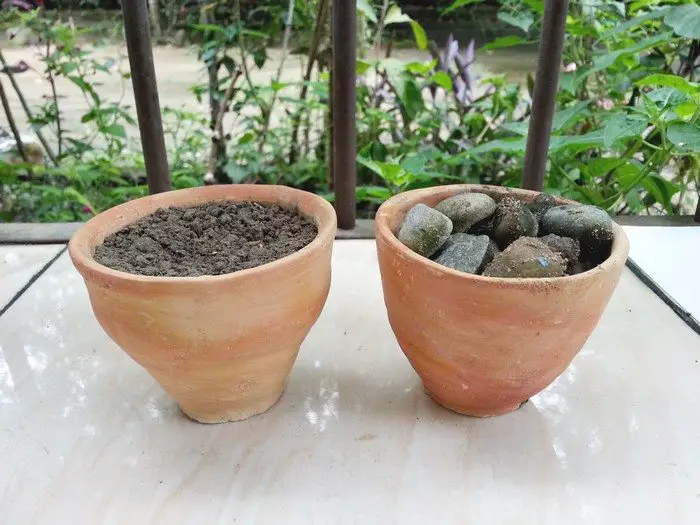
Fill the bottom of the fairy garden teacups with the small rocks. Fill one-third of the cup with rocks.
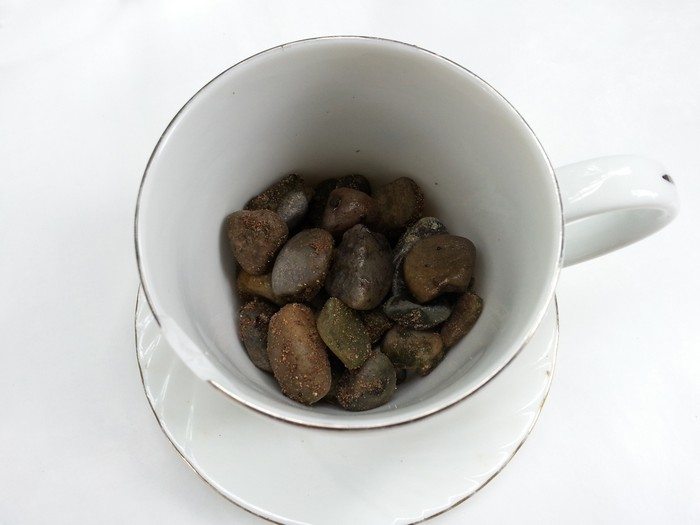
3. Fill the teacup with mixed soil
Now fill the rest of the fairy garden teacups with the mixed soil. Keep the soil level a cm below the edge of the cup.
Keep the teacup aside and let’s create the accessories.
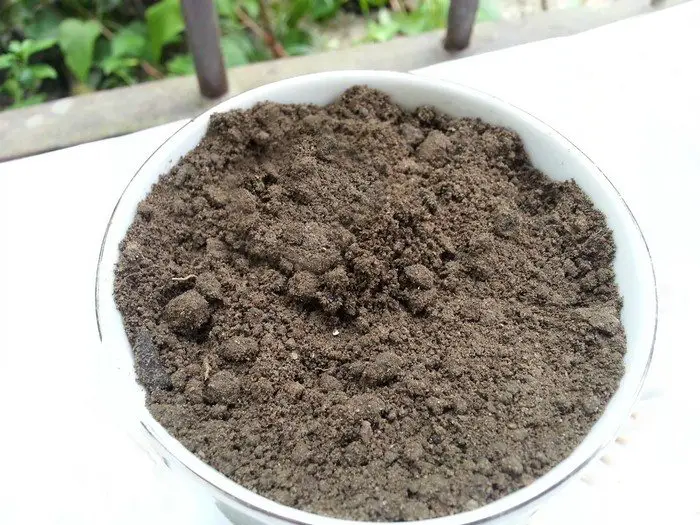
4. Create the fairy garden miniatures
a. The bench
I’m using wooden craft sticks to make a mini bench, ladder and fence for my fairy garden teacups. While you’re making the accessories keep in mind that the sizes of the accessories should be proportionate to the cup size and plants.

Use cutting pliers or x-acto knife to cut the sticks.
Measure the height of the cup, add 2 cm to that and cut 2 sticks of that size. These are the side rails of the ladder. Cut the rungs as many as you need to make the ladder, I had to cut 6 pieces. Now place the side rails on a flat surface and simply glue the ring pieces on them. Allow the glue to dry.

For the bench, you’ll need to prepare sticks for the legs, seat and backside. I used 4 pieces for the seat, 4 pieces for the legs and 5 pieces for the back. Cut a small piece of paper and glue the 4 sticks for the seats on it. Now turn it over and glue the 4 leg pieces on 4 corners.
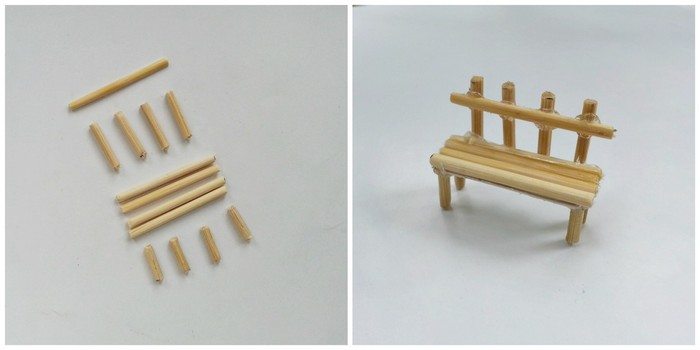
Finally, make the back and glue it to complete the bench.
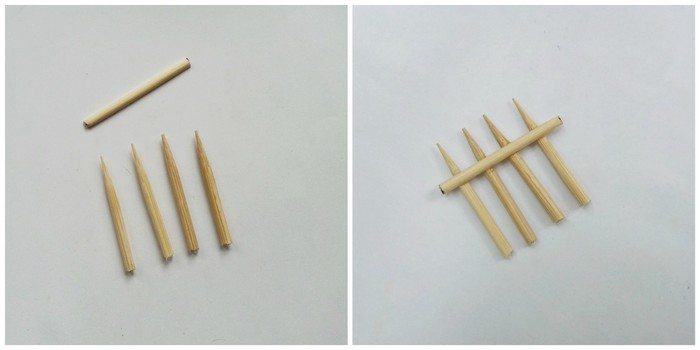
I made a tiny fence so that I didn’t need to cut many sticks. For the fence cut 4-6 small sticks, keeping 2 cm extra with the required height. Place the sticks on a flat surface vertically by keeping an even gap between them. Glue another stick on them horizontally and allow the glue to dry.
You can make many tiny things with these sticks such as a swing, stool, table, cabin, mailbox, bird house and much more.
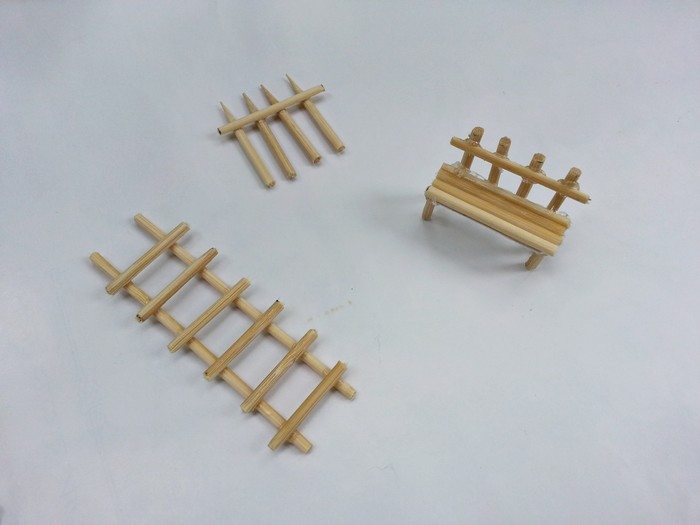
b. The plants
Collecting the plants for this garden is really easy. Collect or buy small cactus and succulent plants. These plants require very low water and nurture. If you plant small cactus and succulent plants it’ll take years for them to grow.
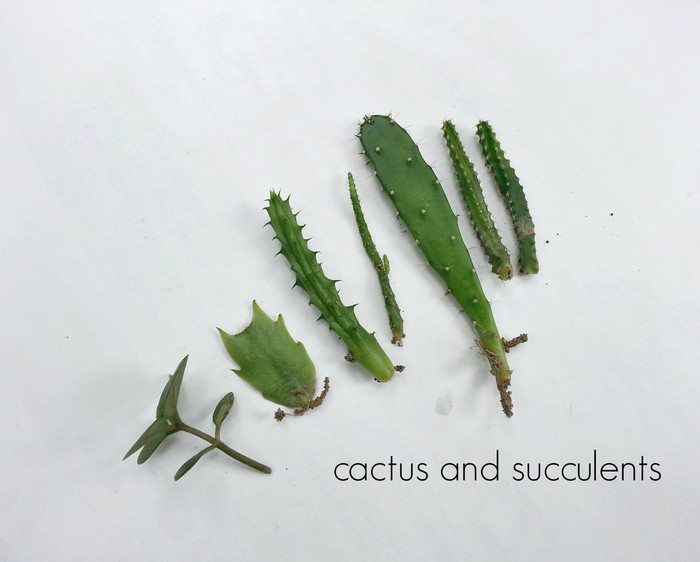
Besides you can also use wall moss, ferns and other plants, they also require less water and nurture.
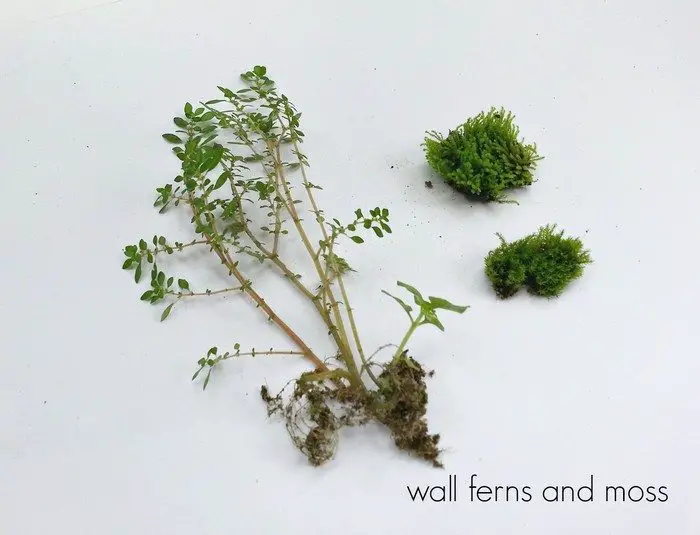
c. The stones, mushrooms & snails
I’m going to place small mosaic stones, clay mushrooms, and super tiny snail shells for decoration.

Now, let’s check all the items: Prepared the pot (teacup), made the mini stuff, collected the plants and also gathered a few more stuff for decoration.
5. Decide how you want to decorate this miniature fairy garden
Once you’ve collected and prepared everything for the cup garden, now decide how you want to decorate and place things.
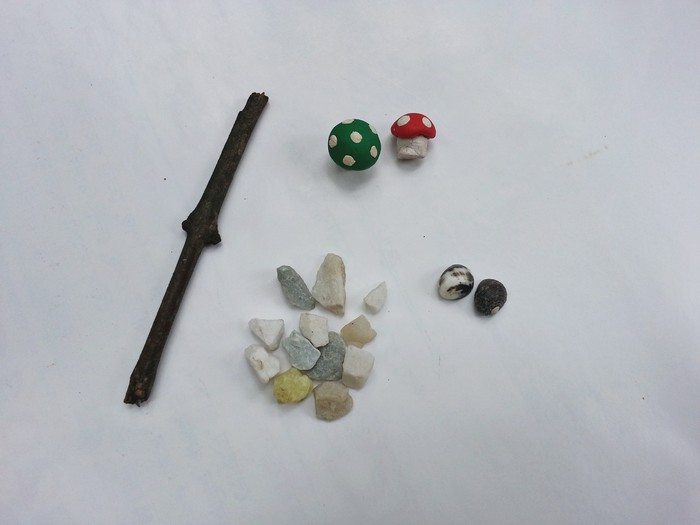
6. Plant the mini plants
Planting these plants are super easy because they don’t have huge roots so you don’t have to worry about messing up the topsoil.

Use a small stick or your finger to make a hole on the soil, place 2 cm of the plant in the hole from the bottom, and fill the rest of the hole with soil. Plant the other cactus and succulents similarly. Try keeping small gaps between each plant and also keep at least a cm of gap between the plants and the cup’s edge.
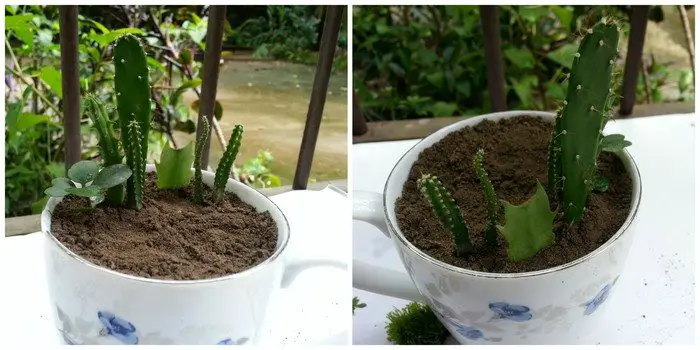
7. Add the miniatures to decorate
a. Add the bench
Lucky me, I found a piece of small flat concrete, just the perfect size and shape. I placed it beside the plants so that I can put the bench on it. You’ll need to glue the bench on that concrete piece.

b. Add some vines
Try to collect vine-type small wall ferns, I have loads of them on the walls of my garden. Take a long piece of the wall plant. Push its root in the soil near the edge of the cup, in front. Now glue the cup on the saucer and then glue the ladder with the cup and the saucer, so that we can climb to the garden from the saucer! Wrap the wall plant around the ladder carefully.
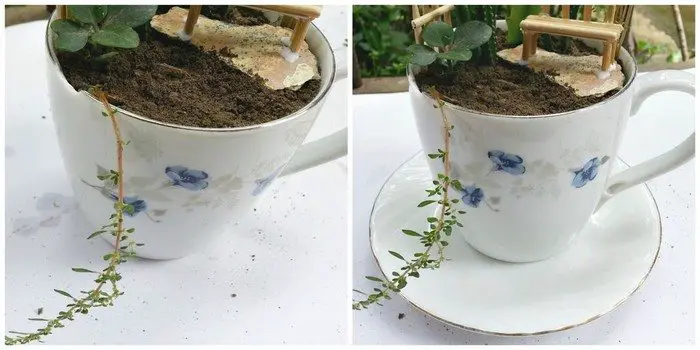
c. Add some moss, stones and snails
Placed some wall moss beside the concrete piece and filled the rest of the soil top with small flat mosaic stones. Also placed the small snail shells near the plants.
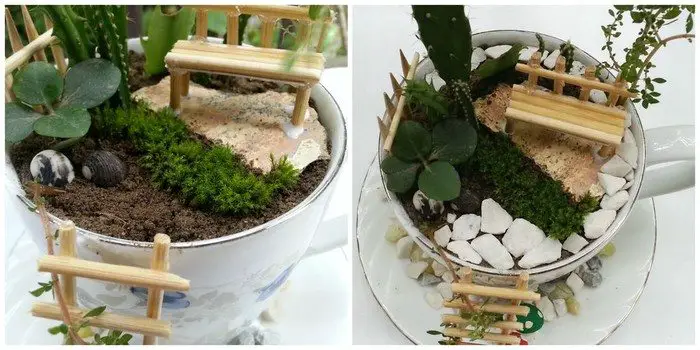
8. The final touch!
The mini fairy garden seemed empty and boring so I placed some mosaic stones around it and glued 2 small clay mushrooms near the ladder.

Ahh, I’m happy with how this turned out!
Thanks for checking out our fairy garden crafting post! We hope you have fun crafting your own little fairy garden and enjoy spending time in it! 😍
Thanks to Muhaiminah Faiz for this great project!
Interactive Elements in Fairy Garden Teacups
Creating a fairy garden teacup isn’t just about arranging plants and miniatures; it’s about crafting a miniature world that can engage the senses and ignite the imagination. By incorporating interactive elements, your fairy garden teacups become a dynamic space that invites ongoing engagement and delight.
Here are some ideas to bring interactivity into your fairy garden teacups:
Miniature Windmills and Water Wheels
Adding miniature windmills or water wheels can introduce movement into your fairy garden teacup. These elements can be made from lightweight materials such as paper, thin wood, or plastic. Position them where a gentle breeze or the touch of a hand can set them spinning, adding life and movement to the garden.
Color Changing Elements
Integrate materials that change color with moisture or temperature. Special paints or stones that change hue when watered add a magical touch to your fairy garden teacups. This not only enhances the visual experience but also serves as a fun indicator of when the garden needs watering.
Hidden Surprises
Place hidden elements that can be revealed through interaction. This could be a tiny door that opens to reveal a miniature fairy, or small drawers in tree trunks that can be pulled out to show hidden treasures. These surprises make each interaction with your fairy garden teacup a delightful discovery.
Interactive Plant Choices
Choose plants that respond to touch, such as Mimosa pudica (the sensitive plant), which folds its leaves when touched. This adds a tactile dimension to your fairy garden teacups, making it a truly interactive and educational feature.
By incorporating these interactive elements, your fairy garden teacup becomes more than just a static display; it transforms into a captivating and engaging mini-ecosystem that will fascinate both the young and the young at heart.
Conclusion
Creating fairy garden teacups is an enchanting way to bring a touch of magic into any home. Each teacup offers a unique canvas for expressing creativity through miniature landscapes and interactive features. As you craft and care for these tiny gardens, you’ll find they add a delightful and whimsical element to your living space.
If you liked this project, you might also like to view Fairy Gardens…

